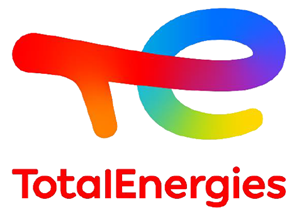Sign up for daily news updates from CleanTechnica on email. Or follow us on Google News!
Back in 2013, a little-noticed team of researchers at CalTech received a funding bonanza of $100 million, aimed at engineering satellites that could transmit solar energy down to Earth any time, any place. The whole idea of space solar seemed a bit wacky back then, but the field has been growing in recent years. The high profile startup Aetherflux is the latest to jump in, and they’ll need a pair of sharp elbows to make room for themselves.
What’s So Great About Space Solar Power?
Aertherflux founder Baiju Bhatt himself broke the news about the new space venture, in an article posted on October 9. Considering that Bhatt is also the co-founder of the high profile Robin Hood app, it’s not surprising that ripples of excitement tore across the Intertubes all day.
“Our mission is to commercialize space solar power,” Bhatt stated. “If we succeed, we unlock a renewable energy source for humanity that can be delivered virtually anywhere.”
For those of you new to the idea, that statement probably needs a bit of unpacking. For starters, solar energy already beams down to Earth from outer space. To be exact, it comes from the sun, so why do we need to send it down from outer space? Also, we already have solar panels to harvest solar energy on Earth and transfer it into an electrical current, and we have batteries to store our solar energy when the Sun is away.
Be that as it may, back in 2014 the US Department of Energy took note of the advantages of solar energy from space and summarized them in one sentence: “Since clouds, atmosphere and nighttime are absent in space, satellite-based solar panels would be able to capture and transmit substantially more energy than terrestrial solar panels.”
The “substantially more” part of the equation could also use some unpacking. Basically, the Energy Department means that space solar systems would provide the global economy with more solar energy, without encountering the land use and habitat conservation issues that impede solar development on Earth.
In effect, space solar also neuters the efforts of fossil fuel stakeholders to slow down the pace of solar development. Pro Publica and other news organizations have been tracking a pattern of manipulating public opinion and interfering with rural solar proposals in the US, and that would be pretty hard to pull off when solar development is taking place somewhere up in the atmosphere.
Space Solar & The National Defense Angle
Another benefit is the ability to transmit solar energy to remote locations, and that is where the US Department of Defense comes in.
Back in 2009, the US Naval Research Laboratory was among the first research institutions to assess that the technology puzzle for beaming solar energy to Earth was coming together. The US Navy has kept a hand in the R&D field since then.
The US Air Force has also supported space solar research through its integrated SSPIDR platform, spearheaded by the Air Force Research Laboratory Space Vehicles Directorate in partnership with the Navy and Northrup Grumman.
“In collaboration with the Naval Research Laboratory (NRL) and primary industry partner, Northrop Grumman, AFRL established the SSPIDR project to rapidly infuse space technological innovations in collecting solar energy to provide uninterrupted, assured, and logistically agile power to expeditionary forces,” AFRL explains.
Last year the US Space Force also contributed to the effort under a contract with the US startup Orbital Composites, which specializes in 3D-printed systems.
Space Force has also hooked up with AFRL to provide a $9.9 million grant to the University of Buffalo, tasking its electrical engineering experts to partner with the Rochester Institute of Technology in a joint research project aimed at using perovskite solar cells in space. Perovskite solar cells have begun to cross the CleanTechnica radar for space applications elsewhere, too (see more perovskite solar cell background here).
What Does Aetherflux Have Up Its Sleeve That Nobody Else Does?
The Arizona self-repairing solar panel startup Solestial is reportedly among the stakeholders participating in the new research project along with the lightweight solar firm Swift Solar.
That brings up the question of what Aetherflux has to offer, considering the swirl of activity around the space solar field in recent years. The US is just one of several R&D hotspots. Another example is the UK, where the aptly named startup Space Solar aims to launch a demonstration project into orbit within the next few years.
Bhatt describes the Aetherflux approach in contrast to conventional space solar concepts that involve wide swaths of flexible solar-harvesting material to be unfurled in far-off geostationary orbits, which also require sprawling receiver stations on the Earth.
“We’re taking a different approach,” Bhatt writes. “We’re building a constellation of small satellites in Low Earth Orbit, working together to transmit power to many small ground stations.”
“Instead of transmitting power through microwaves, we’ll use infrared lasers, allowing for higher power output and smaller footprints on Earth,” Bhatt adds.
One Way Or Another, Space Solar Is Coming
“This isn’t your grandfather’s space solar power concept,” Bhatt adds again for good measure.
That may be so, though it doesn’t necessarily mean that the idea is unique.
In an interesting twist on the LEO theme, for example, over the summer if CleanTechnica spotted a press release outlining a plan called the Star Catcher Network, formulated by the Florida startup Star Catcher.
The basic idea is to deploy higher-LEO satellites to harvest solar energy, then feed it over to other LEO satellites that can use some extra power.
“By providing spacecraft with higher concentrations of energy to state-of-the-art solar arrays, the Star Catcher Network will significantly magnify space-based power generation to meet this growing demand and enable satellite operators to expand capabilities and uptime while reducing upfront spend,” the company explains.
Of course, that’s not the same thing as beaming solar energy from space down to Earth. However, Star Catcher hints that it may be hunting other opportunities in addition to LEO satellites.
Hold onto your hats. Last month the University of Toledo reported that it nailed down an award of up to $15 million from the Air Force to keep pushing the space-based solar power envelope. Building on the school’s longstanding relationship with AFRL, the award is aimed at developing new thin film solar technology for space applications including satellite support as well as transmitting solar energy down to Earth.
Follow me via LinkTree, or @tinamcasey on Threads, LinkedIn, and Instagram.
Image (cropped): Space solar power once seemed like a far-out idea, but the high profile startup Aetherflux is among the stakeholders aiming to bring space-sourced solar energy down to Earth (courtesy of US Air Force Research Laboratory).

Have a tip for CleanTechnica? Want to advertise? Want to suggest a guest for our CleanTech Talk podcast? Contact us here.
Latest CleanTechnica.TV Videos
CleanTechnica uses affiliate links. See our policy here.
CleanTechnica’s Comment Policy





